What does it mean to be a neighborhood restaurant in a pandemic? How four are surviving
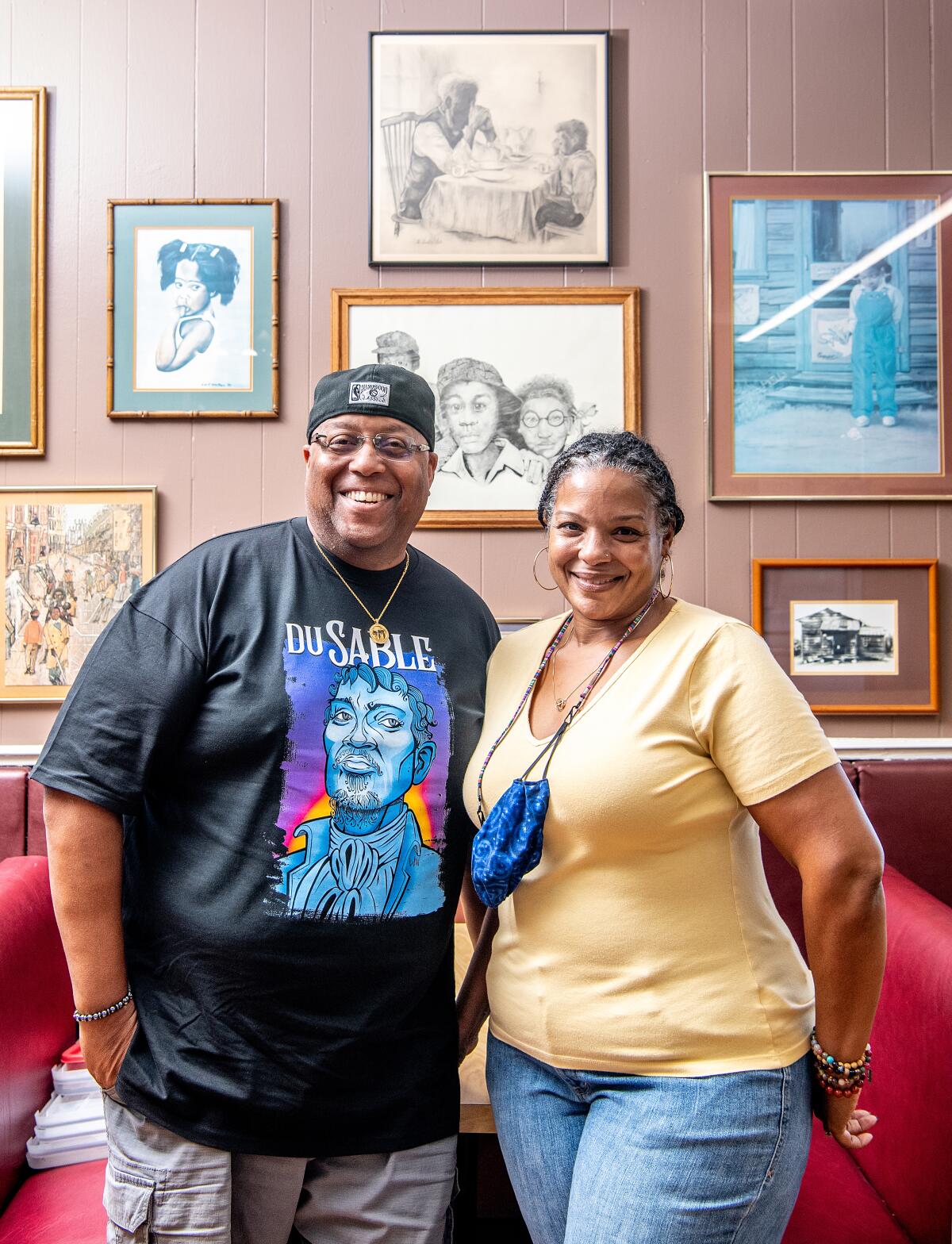
On a recent afternoon, in the corner of a red leather booth at the Serving Spoon in Inglewood, owners Angela and JC Johnson counted their blessings.
“After all that’s happened, we realize we have zero control over everything,” Angela says. “We are just here to feed the people.”
Her father opened the Southern food restaurant in a shopping center off Centinela Avenue in 1983. When Angela’s father retired in 2004, she and her husband, JC, purchased the Serving Spoon. It’s a place she knows well — she’s worked there on and off since she was 16, starting as a server and eventually becoming the manager.
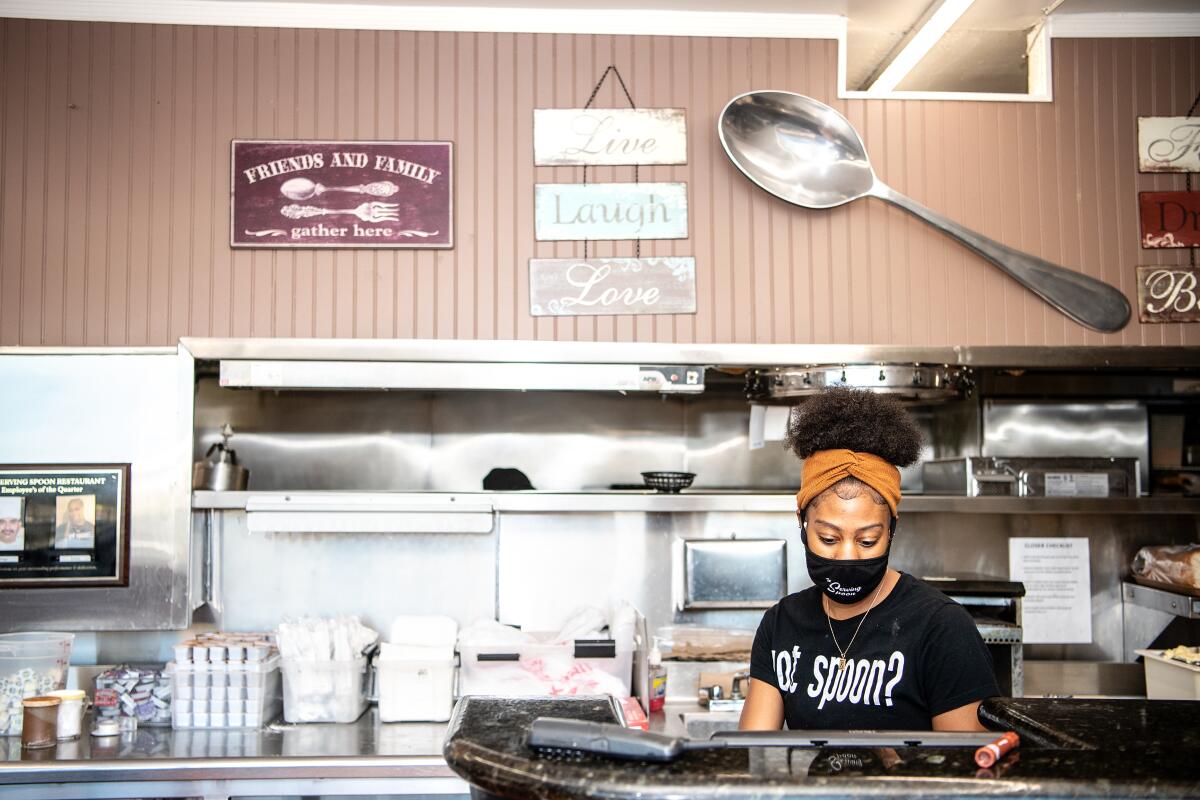
In the last 10 months, the once bustling counter, where people conversed over piping hot plates of fried catfish, grits and eggs, has become a storage area for takeout containers.
The Serving Spoon, like many neighborhood restaurants around the country, is one of the threads in the fabric that holds a community together, a place where we turn for comfort and connection. As these restaurants age, we grow with them, our favorite haunts providing so much more than a familiar backdrop for countless birthdays and celebrations.
What does it mean to be a neighborhood restaurant in the middle of a pandemic, in a year of whiplash induced by back-and-forth mandates? (The state’s latest stay-at-home order, which went into effect late Dec. 6, affects multiple regions across California, including Southern California, once its available ICU capacity falls below 15%. The order restricts restaurants in those regions to takeout and delivery only.)
I recently posed this question to four restaurant owners who have operated their businesses for decades, becoming essential parts of their communities.
It is, after all, no small feat to keep a restaurant’s doors open for a single year, and these proprietors have been able to watch customers go from diapers to braces to college graduation gowns for decades.
The Serving Spoon transitioned to takeout and delivery after the initial closure order in March, and the Johnsons opened a patio in their parking lot when outdoor dining restrictions were modified. Regulars have sustained the business, but when outdoor dining was banned in November, JC says they saw an immediate drop in sales. And with the increased focus on takeout, the restaurant’s cost of operations has gone up significantly.
“You have the to-go container, you have the condiments, and none of those are reusable,” JC said. “In a business where margins are already tight, they become tighter, because now your cost to distribute the food has gone up.”
But even with the increasing costs of paper products and ingredients, the Johnsons have refused to raise their prices. Like so many restaurants, they started a Go Fund Me account to help employees.
“Our prices are reasonable, but to raise them for people who are just wanting a hot meal and for people who don’t have jobs who can’t afford stuff anyway... it would just be criminal,” Angela says. “We are just eating the cost.”
In April, the Johnsons partnered with a local radio station for about six weeks in a “pay it forward” program. Each week, they sponsored one or more families in need with a $500 check. JC breaks down in tears as he remembers their stories.
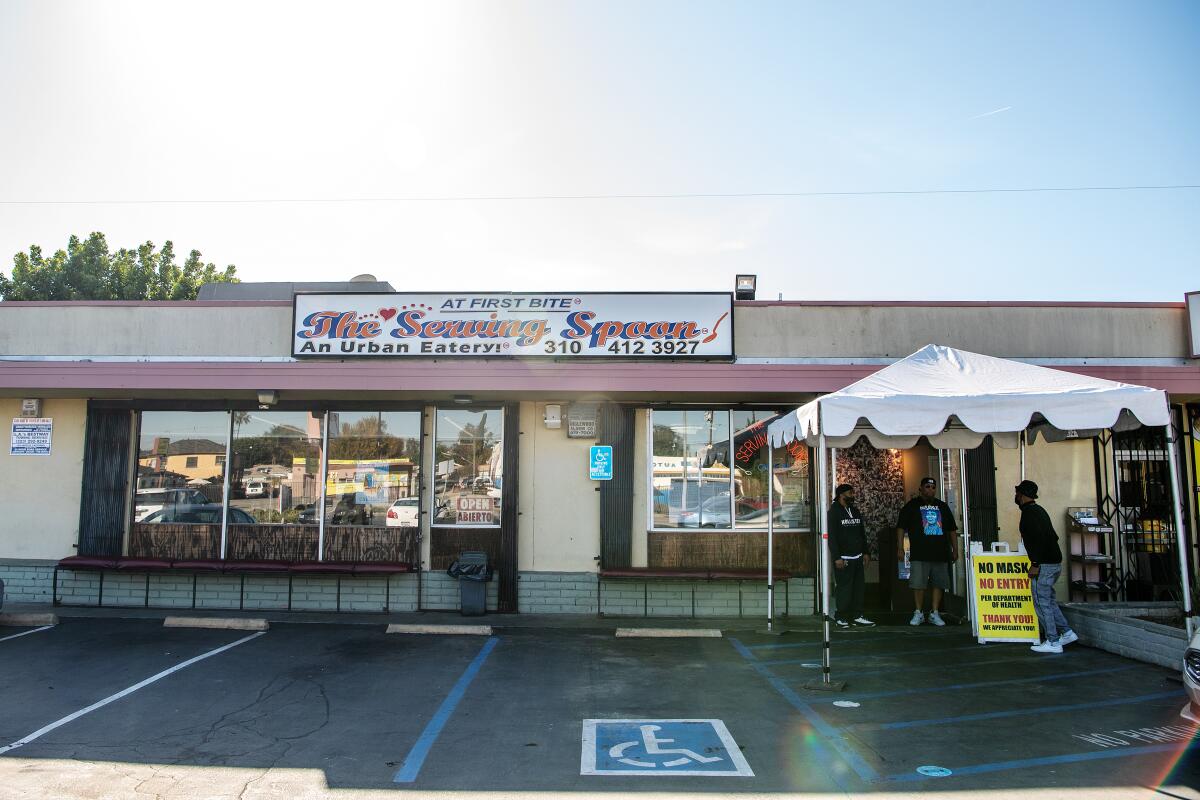
“There are a lot of people hurting, and we just want to be able to make the mark that has been set out for us,” he says.
By the beginning of next year, the couple plans to start accepting EBT payments in an effort to help even more people in need.
“Being a neighborhood restaurant is a place people can come and be familiar with, even if you can’t sit down and have that regular interaction,” Angela says.
“And some great food,” JC adds.
“It’s consistency,” Angela says. “Everything is so inconsistent right now. People know they can at least get a good breakfast and a smile.”
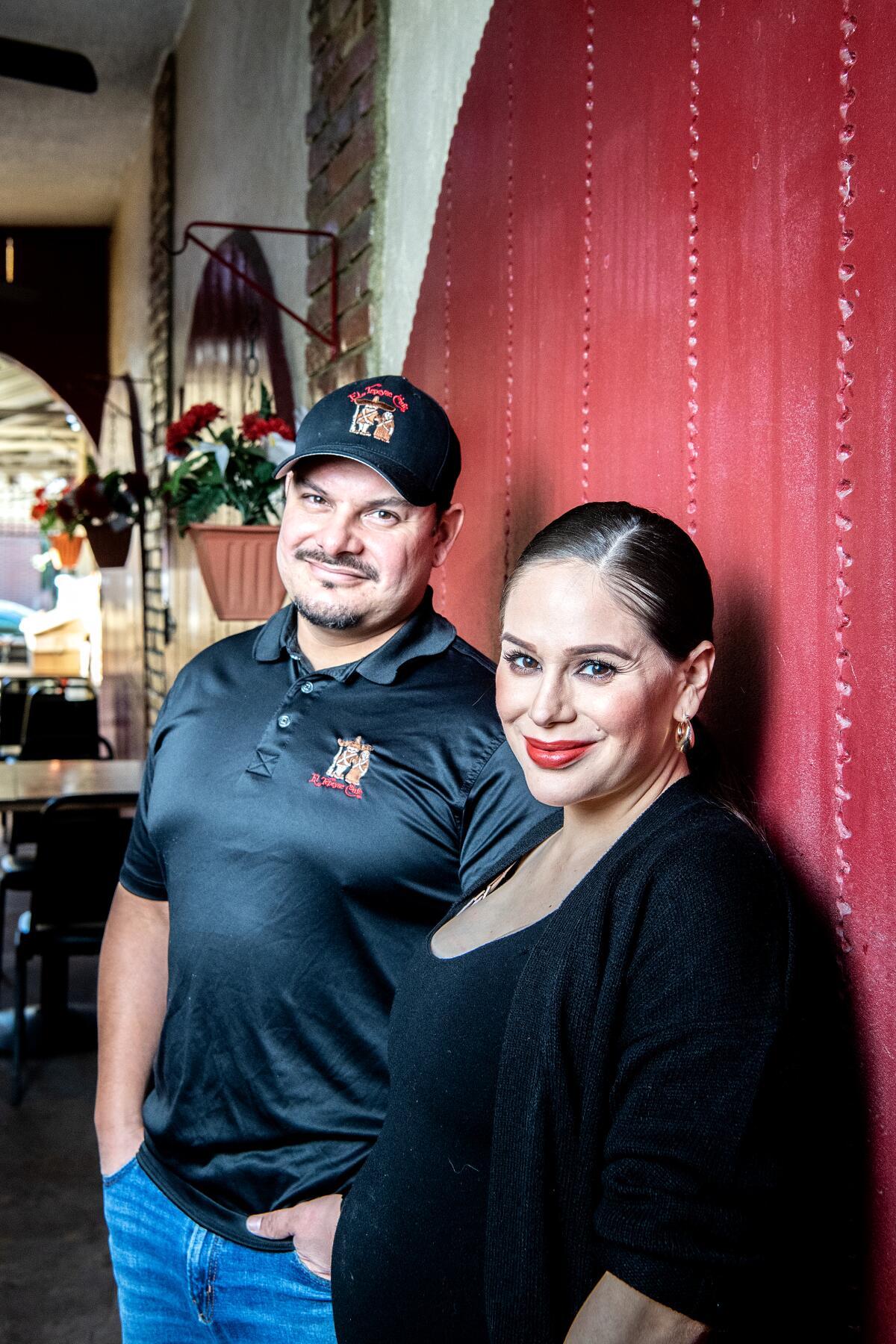
Carlos Thome’s grandfather Manuel Rojas opened El Tepeyac Cafe in Boyle Heights in 1956. As he was growing up, Thome wanted to be a cop, but he started working for the family business 14 years ago and took it over with his wife, Bernadette, in 2017.
The restaurant is home to Manuel’s Special Burrito, a 5-pound, as-long-as-your-arm specimen that serves two to four people, depending on whom you share it with.
Seated in the now empty dining room on a recent morning, Thome points to a black-and-white photo on the wall of his smiling grandfather. It reminds him of his earliest memory in the restaurant — when he was about 4, and his mother brought him to work with her. He remembers walking through the dining room, behind the counter, past the cigarette machine and hearing people laughing and talking, his grandfather kibitzing with customers.
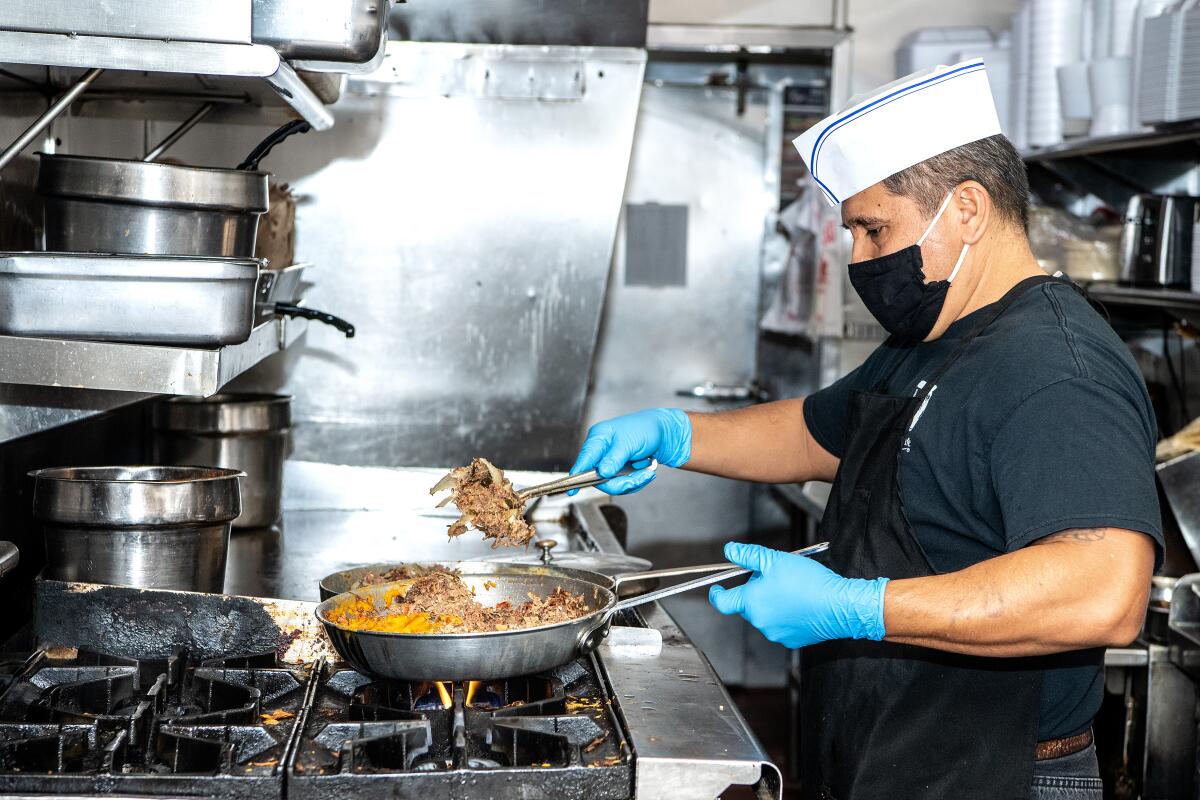
He says the restaurant’s survival is due to the support of people in Boyle Heights, people who take great pride in their community.
“When you think of Boyle Heights, you think of El Tepeyac,” Thome says. “A neighborhood restaurant now, especially with this place, it’s such a family place, it’s traditional, and we have employees who have been here for 35 years.”
But even with a steady stream of regulars, Thome knew he had to adapt to survive and to keep up with the increased costs of running a restaurant during a pandemic. In September, he opened a virtual kitchen.
El Tepeyac Cafe now lists two locations on its website — the original in Boyle Heights and a location at Kitchen United in Pasadena. The latter is a commercial kitchen where numerous restaurants make food for takeout and delivery only.
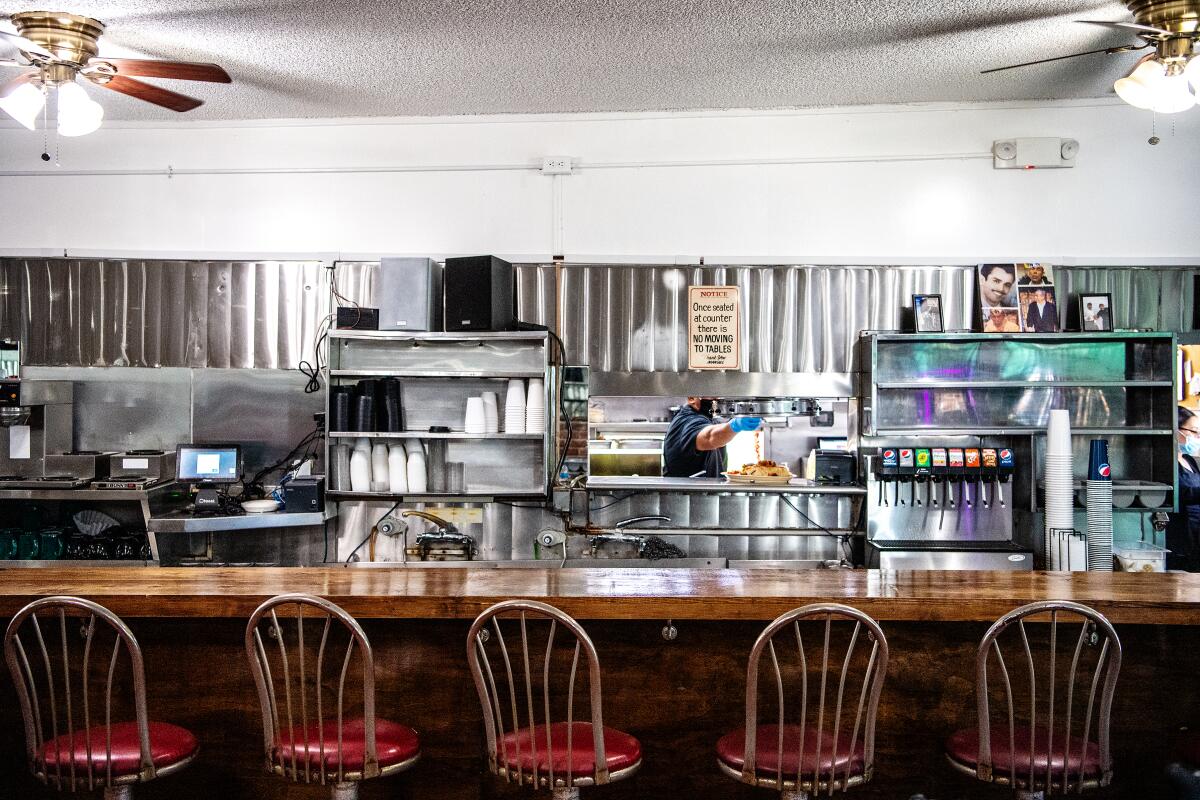
“There is no contact with people, other than handing them the order, but not dealing with people directly is sad,” Thome says. “We usually get to interact with people and talk to our customers, but we had to adapt and look for something that’s going to work during this time.”
When Al and Delores Thomas opened the Tallyrand in 1959, it was a one-room coffee shop with a counter off Olive Avenue in Burbank. Over the years, they added dining rooms and a bar. In 1995, their children, Mark Thomas and Karen Ross, built the patio. Mark Thomas started working at the restaurant as a young boy, cleaning and doing maintenance; Ross greeted diners as a host at age 14.
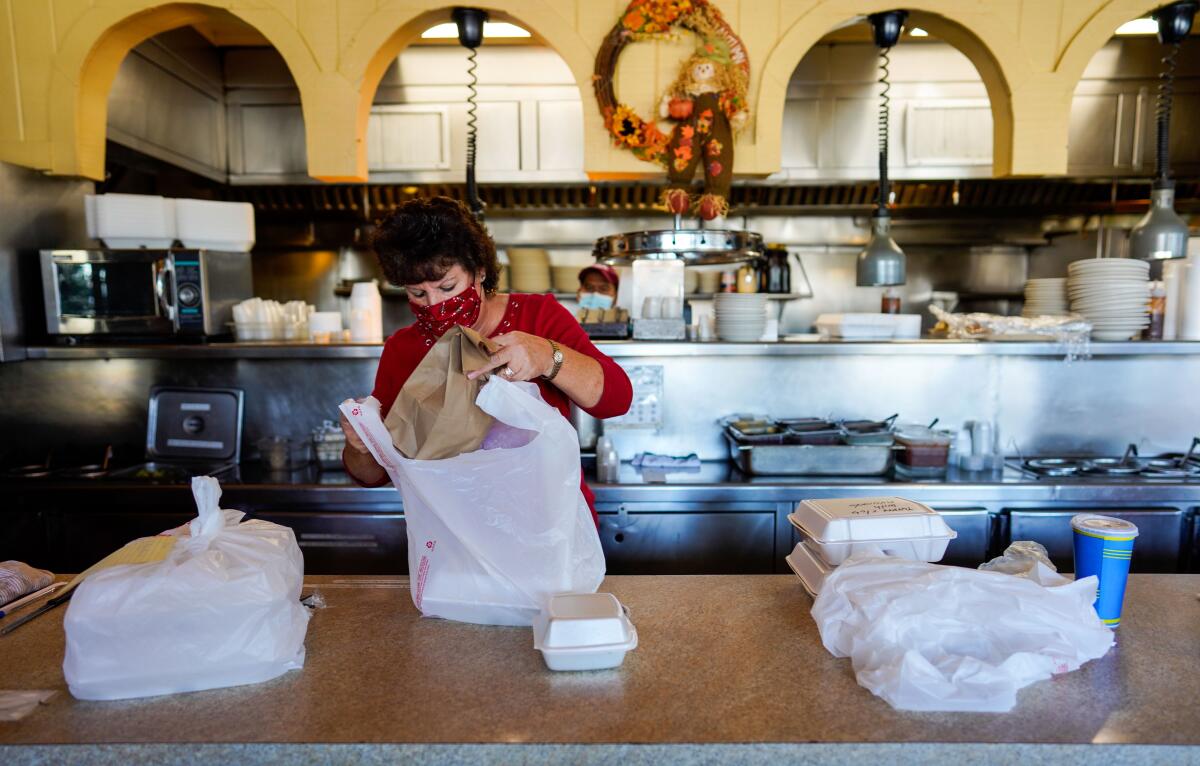
Some of the employees have been there for almost 50 years, and that, Ross says, is “what’s so hard about this.”
Speaking just days before Los Angeles County ordered the shutdown of all outdoor dining on Nov. 25, she adds: “If this closure happens again on Wednesday, I’m looking at 24 people that make our every day happen — they are going to be out of a job again.”
Before March, the Tallyrand hadn’t changed much since the ‘60s. The menu was mostly the same list of omelets, buttermilk pancakes, hot turkey sandwiches and burgers that Ross and Thomas’ parents had served. The restaurant turned out seven types of soup a day, including cream of turkey and clam chowder, all made from scratch. After the initial shutdown in March, the siblings offered only one kind of soup. They cut back the restaurant’s hours and stopped offering the prime rib, meatloaf and roast pork specials, hallmark dishes that regulars had enjoyed over the years.
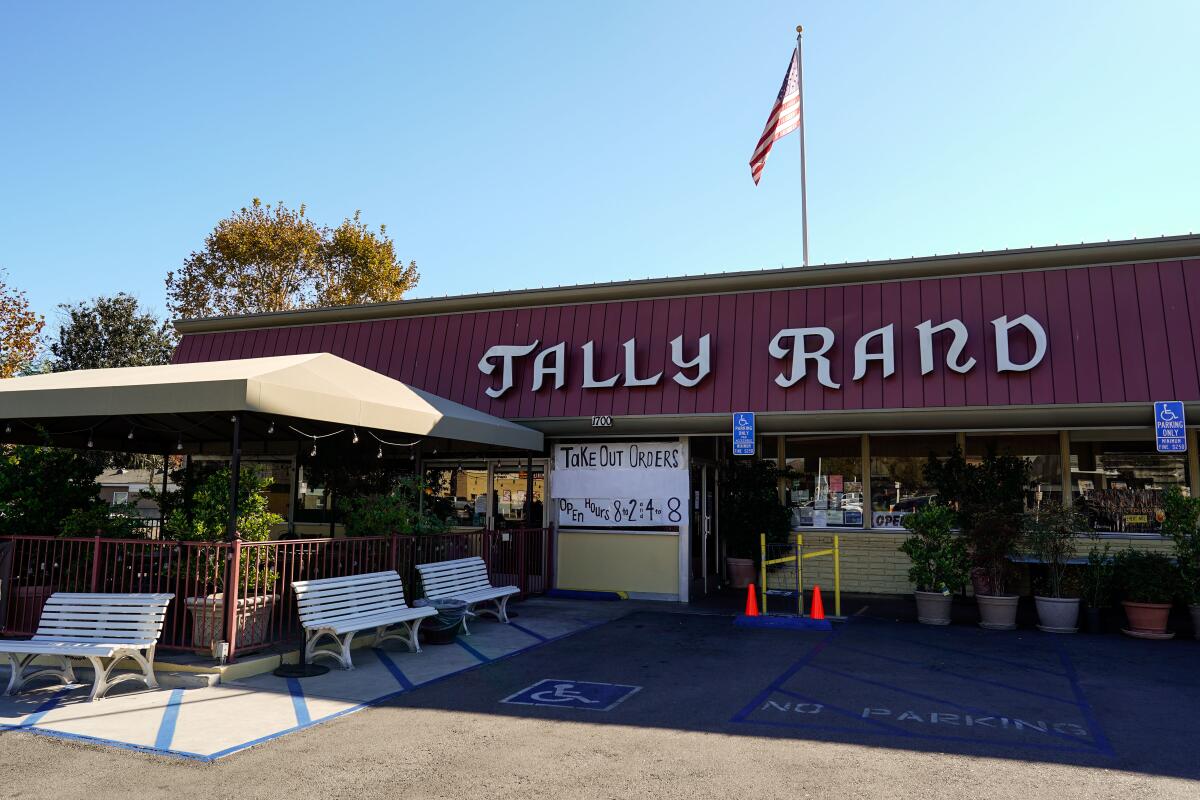
“Since March, it’s just been a very different environment without that connection or warm conversation,” Ross says. “It’s really stressful for me to look outside and see our tables empty.”
With outdoor dining, Ross said the restaurant was able to maintain, even with a 36% drop in sales.
“We were so thankful for outdoor dining, and we got to a place where we thought we were good,” she says. “Then we took a giant step backward.”
On Nov. 25, Ross had to lay off 16 employees, and that 35% drop in sales climbed to 60%, almost immediately. She says she’s watching every single dollar, and she’s thinking about reducing the restaurant’s hours.
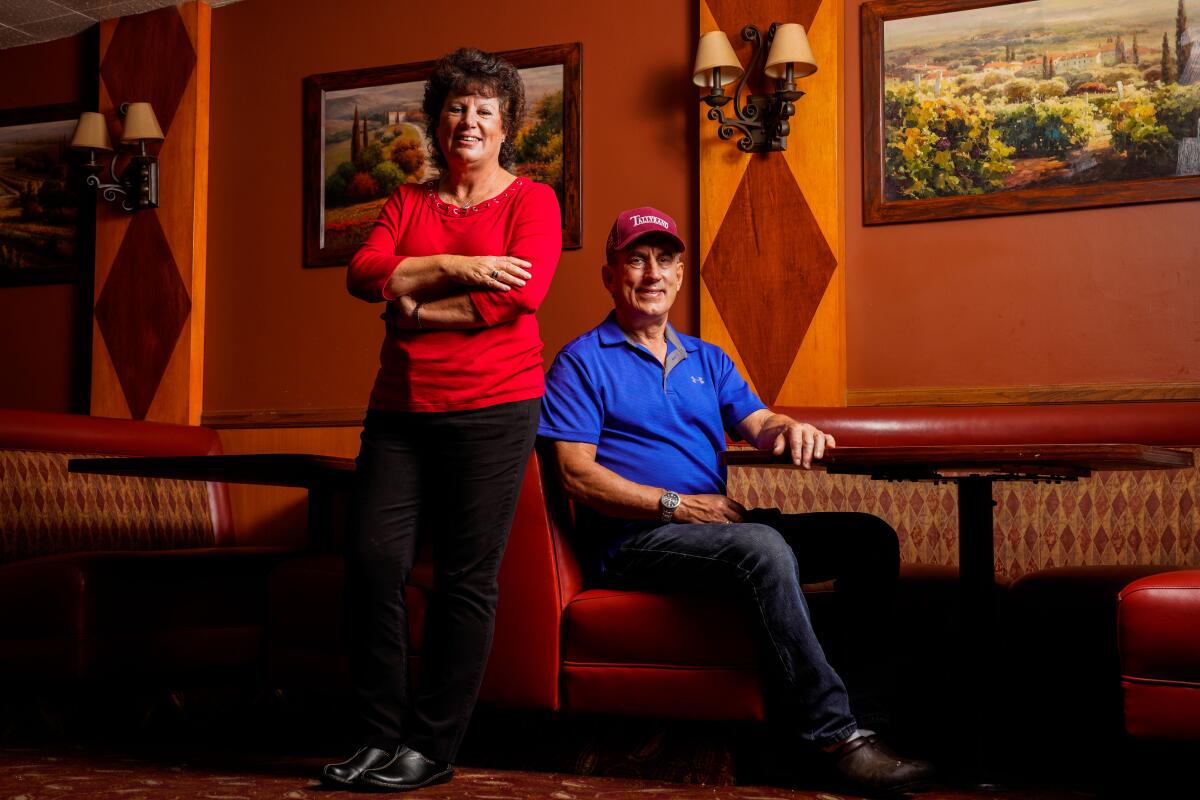
“We are trying to be consistent, but when you’re pulling in $350 on an entire breakfast shift, it really makes your eyes wake up.”
Ross believes the Tallyrand will be OK — she and Thomas own the land the restaurant sits on — eventually.
“The Tallyrand is like a family,” she says. “This closure kills me. My gosh. These people have been with us for years. They are struggling.”
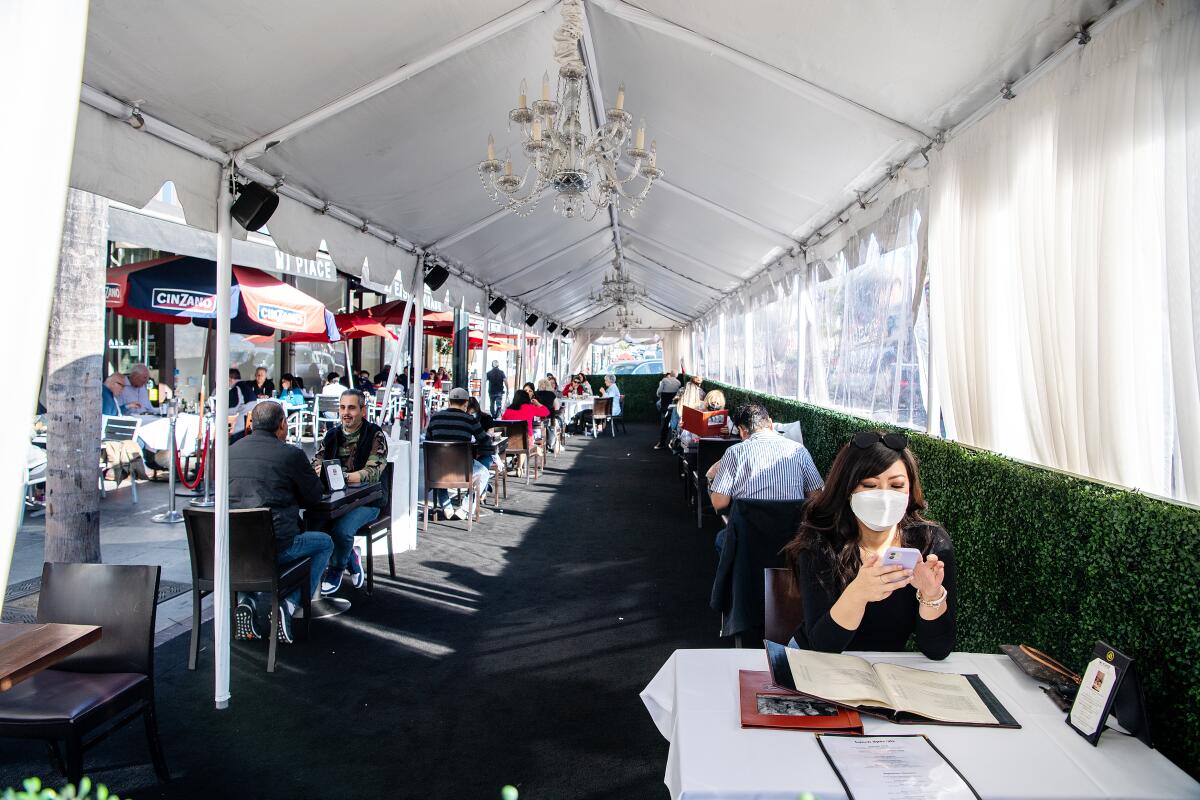
Mi Piace, a 31-year-old Italian restaurant in Old Pasadena, continued patio dining after the latest shutdown in November. (The city has its own health department and made the decision to not observe Los Angeles County’s outdoor dining ban).
Owner Armen Shirvanian notes that he spent more than $20,000 setting up the covered patio area in front of the restaurant and says he spends an additional $2,000 to $2,500 a month on personal protection equipment and sanitation.
Mi Piace closed for seven days in March to regroup and set up delivery apps. But those seven days were tumultuous for Shirvanian, who has been walking through the restaurant’s doors every day.
“It was new ground for all of us, and, emotionally, it really took a toll on me,” he says. “To see the restaurant empty, with no one here, it was an emotional mountain to climb.”
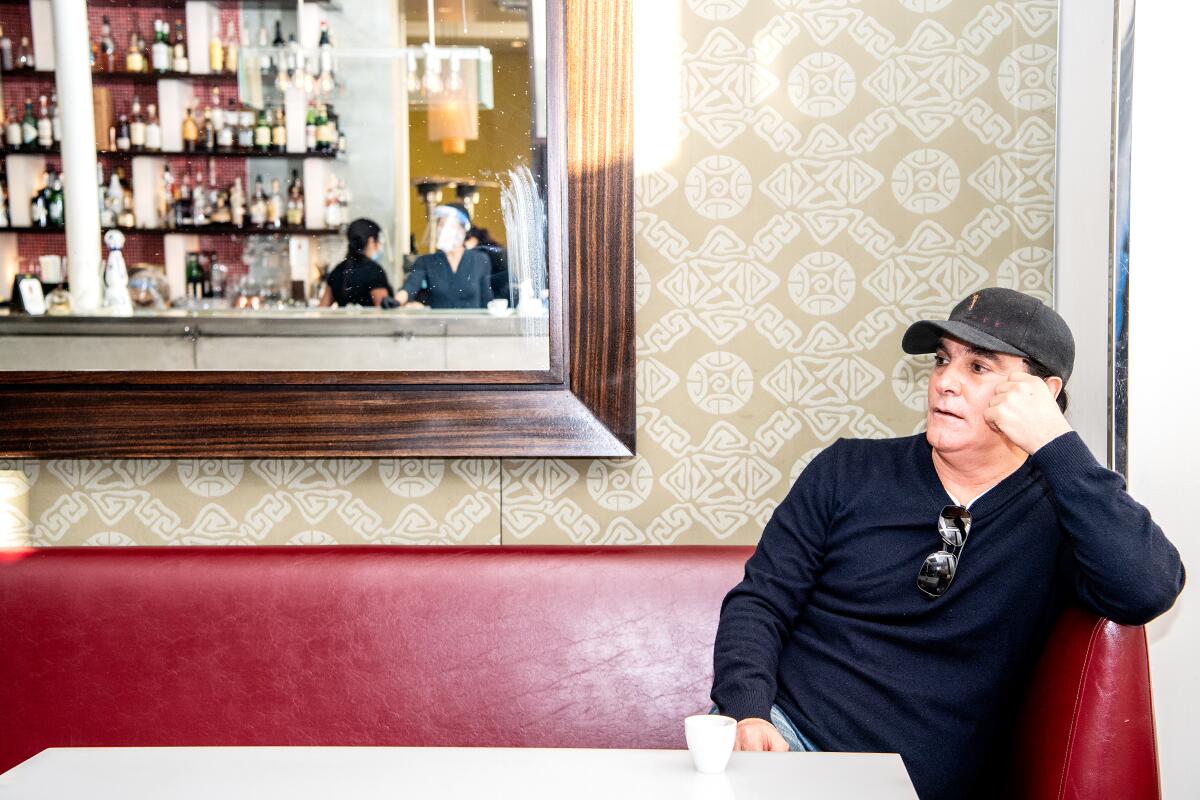
Shirvanian opened the restaurant before Old Pasadena was revitalized in the ’90s. His dad’s dream was for him to become a doctor or a lawyer, but Shirvanian fell in love with the restaurant business after trips to Bob’s Big Boy in Glendale.
“After church on Sunday, my dad used to take me there,” he recalls. “There was the story of the founder on the wall. I said, ‘One day, I want to do that.’ ”
(Growing up in Pasadena, I saw Old Pasadena, blossom around the restaurant in the ’90s and 2000s. Mi Piace is where I celebrated my 16th birthday, in the now-empty back room. I got a job as a hostess at the restaurant when I was 19 and worked there for about six months.)
“I realized how important this restaurant is during COVID,” Shirvanian says. “Restaurants are the soul of a city, whether it’s Pasadena, Los Angeles, Manhattan or Chicago. I have never been thanked so much for being open.”
With most of Shirvanian’s employees working 12-hour days, the restaurant was able to keep a steady takeout and delivery business running for months before outdoor dining was allowed in May. When word of a potential second shutdown in November hit, Shirvanian and other members of a loosely formed restaurant association called Pasadena Mayor Victor Gordo and asked for help. By that Monday afternoon on Nov. 23, the Pasadena City Council had decided to keep restaurants open.
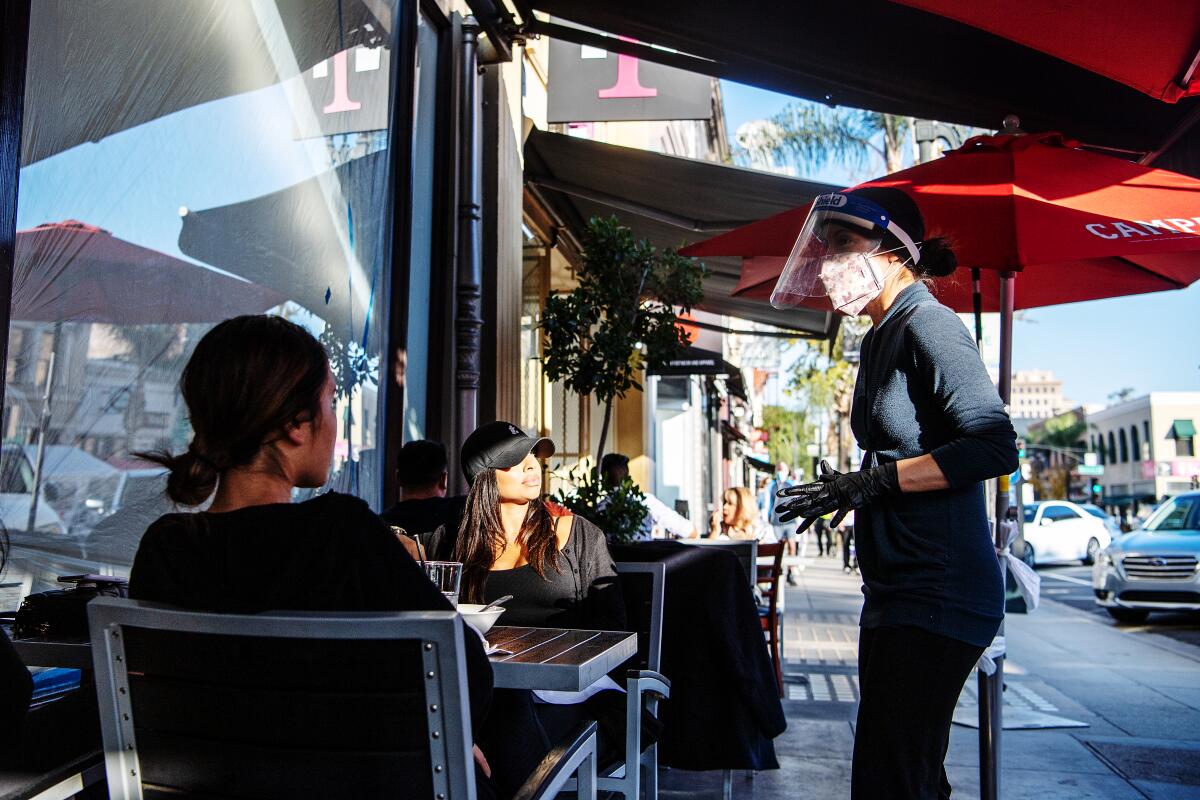
On Nov. 25, diners sat six feet apart under a long white tent, twirling orders of spaghetti aglio e olio and sipping martinis. It was nothing close to what the dining room would have looked like on a crowded Friday night pre-COVID-19, but the scene hinted at normalcy.
At midnight Nov. 29, Mi Piace closed its dining room in accordance with the latest shutdown order.
“The restaurant gives people a sense of relief and the ability to go out and engage in a safe way,” Shirvanian says. “Now, more than ever, we have become even more the fabric of our community and of the neighborhood.”
More to Read
Eat your way across L.A.
Get our weekly Tasting Notes newsletter for reviews, news and more.
You may occasionally receive promotional content from the Los Angeles Times.









